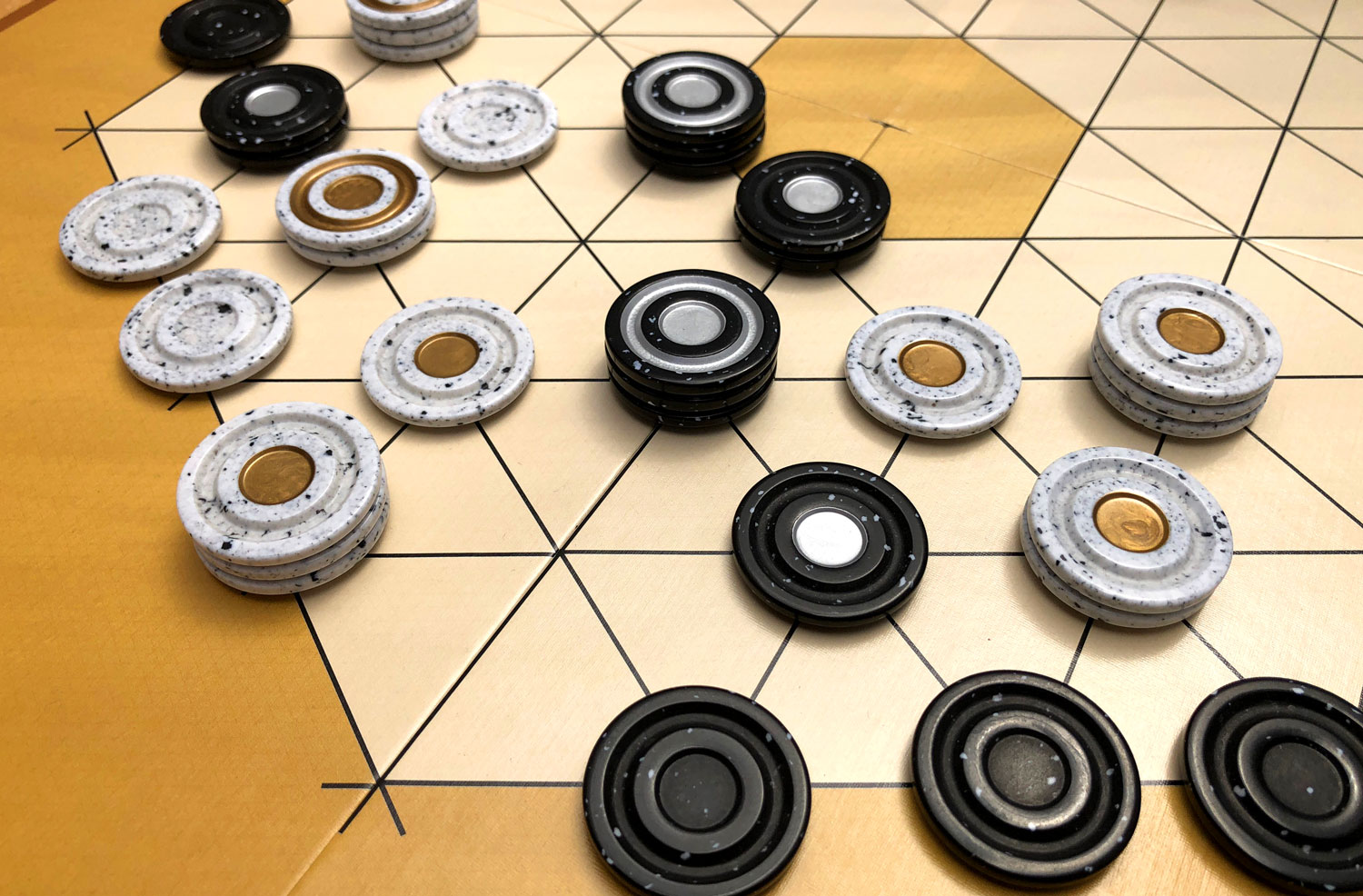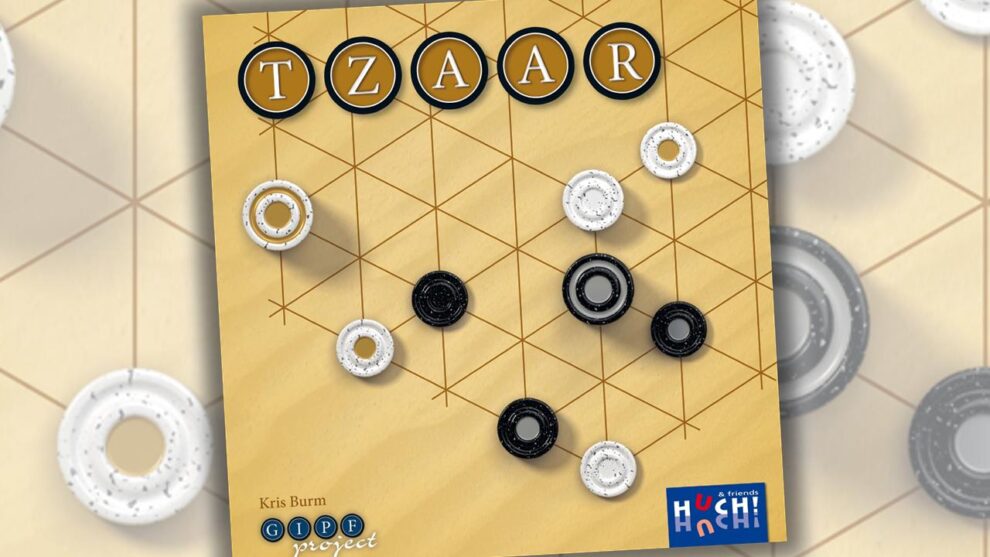Project GIPF is a series of eight abstract strategy games designed by Kris Burm. Each game features a hexagonal playing area and involves a dwindling of either pieces or playing area mechanic. The way they approach these elements is not only unique, but combines what I feel are the best qualities in most abstracts: simple rules that reveal complex game play.
If you’ve never heard the games within Project GIPF, GIPF, TAMSK, ZÈRTZ, DVONN, YINSH, PÜNCT, TZAAR, and LYNGK, I encourage you to seek them out, either in cardboard and bakelite or digitally online. They are well worth your time.
Today’s game: TZAAR

When TZAAR was released in 2009, it officially replaced TAMSK in the GIPF Project series of games.
If you read my review of TAMSK, it will come as no surprise that I think removing TAMSK was a mistake. However, I have no reservations about adding TZAAR’s to the GIPF Project.
TZAAR shares many concepts with creator Kris Burm’s other games: there’s a six-sided board and you can stack the bakelite pieces one upon the other. The offense/defense questions are there as well: do I move to make myself stronger or my opponent weaker?
Each player has three types of pieces in TZAAR. There are six Tzaar pieces, those with a colored center and outer ring; nine Tzarra pieces with a blank center spot and a colored outer ring; fifteen Totts, pieces with no colored center or outer rings.
Playing the Game
TZAAR starts in one of two ways: you’ll either lay the pieces out in the set pattern suggested by the rule book, or players may choose to place pieces randomly on the board. (In my experience, there was surprisingly no difference in gameplay between the two setups.)

Your goal is to either eliminate all of one of the three types of your opponent’s pieces, or to keep your opponent from being able to make a capture.
There are two moves per turn. The first is capturing one of your opponent’s pieces.
Captures are made by moving one of your pieces in a straight line to cover one of your opponent’s pieces. Captures can be made by crossing over empty intersections, but you cannot jump over any other pieces to do so.

You’ll remove your opponent’s piece from the board and leave your piece in its place. In TZAAR, any piece can capture any other piece, regardless of how many colored rings or spots either piece does or does not have.
Your second move involves an important choice: you can either capture another of your opponent’s pieces or you can place one of your own pieces atop another of your pieces.
By placing one of your pieces on top of another piece you do two things: you eliminate another of the lower pieces in the stack from your numbers of that piece (a Tott placed atop a Tzaar means you have one less Tzaar on the board) but you also create a strong stack. Any of your opponent’s single pieces can not capture your stack of two pieces. Your stack of pieces three high cannot be captured by a stack of pieces one or two pieces high, etc.
TZAAR Thoughts
In PÜNCT, the center of the hexagonal board is considered too powerful to allow pieces to be placed there on their initial entry onto the board. In TZAAR, the center of the board is simply missing from the board. Visually, this divides the board into halves, or even quadrants. Although you can still, potentially, make a capture clear across the board, the missing center compartmentalizes the game play.
With each turn, the number of pieces on the board diminishes. The good news, of course, is that you’re claiming an opponent’s piece on each turn. The bad news is they’re doing exactly the same thing. Since there are fewer Tzarrs than any other piece, they will be the first attacked in the game—on both sides. To protect from this, stacking a Tzaar on top of another piece is a necessary defensive move, one that also sets you up offensively at the start of the midgame.
After only a few moves, you’ll find yourself taking additional time to consider each new move. Which piece that I can capture is threatening me the most? Is there another piece I should attack—or do I need to stack a piece to both defend a piece and/or better attack another piece?
Throughout the game, you need to constantly count your Tzaar and your Tzarra pieces, as well as those of your opponent. Failure to do so will certainly cost you the game. Assume you have enough Tzaar pieces to need to worry about them, and that last one will be captured before you know it.

Despite all the mental multi-tasking that goes on, a game of TZAAR usually takes under 15 minutes. It’s clever enough for a losing player to realize why they lost and immediately want to play it again having learned their mistake. That process usually repeats itself several times with new players.
The year TZAAR was released, Games Magazine gave it its prestigious Game of the Year Award.
After just a few plays, it is easy to see why they made their decision. TZAAR combines a simple rule set with a complexity of gameplay that easily invites repeated play.
Here's a list of all Project GIPF reviews.










Add Comment